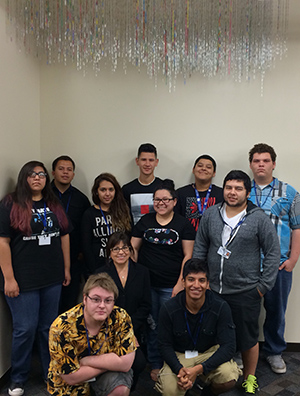
Julia Woods
Echoes and Reflections inspired Julia Wood's class to make a big effort to promote awareness of the Holocaust in their community.
At East Valley Academy in Mesa, Ariz., Wood uses the 10 modules of Echoes and Reflections, which each includes primary sources and testimony clips, to teach about the Holocaust. She attended an Echoes and Reflections educator seminar last summer and said it was “phenomenal,” and even inspired her to teach a semester-long Holocaust literature elective.
Wood covers one Echoes and Reflections module per week and shows the testimonies included in the lesson guide. She said the testimonies inspire emotion and gratitude in her students in their class discussions. Many of her students are “at-risk” and come from a lower economic status, so testimony helps put their own life struggles into perspective.
“The diverse selections of literature as well as the films we watch are important, but the firsthand eye witness testimonies definitely inspire the most discussions and closeness to the realities in each unit,” Wood said.
Wood said her students often ask, “Why didn’t anyone do anything?”
In their discussions, the class began thinking about something meaningful they could do in their community. After watching the film Paperclips, which chronicles a school’s effort to collect 6 million paper clips to represent the 6 million victims of the Holocaust, they decided to also embark on a paper clip-collecting project and collect 1.5 million for the children who were killed.
After just two months of collecting paperclips, the class received 17,000. The goal is to continue the project next semester, with each new class adding to the collection, until they reach their goal of 1.5 million paper clips.
For now, the collection is displayed in the school’s media center as a hanging shower of chained paper clips, a framed informative gallery and a list of donors.
“The community and school wide effort in this endeavor has been baffling and so rewarding – the students are very proud which is rare in their worlds,” Wood said. “This experiment is something that they will never forget and we were able to emphasize the idea that these individual clips representing such great loss now connect us to a past, to our present and to our future students and classes.”